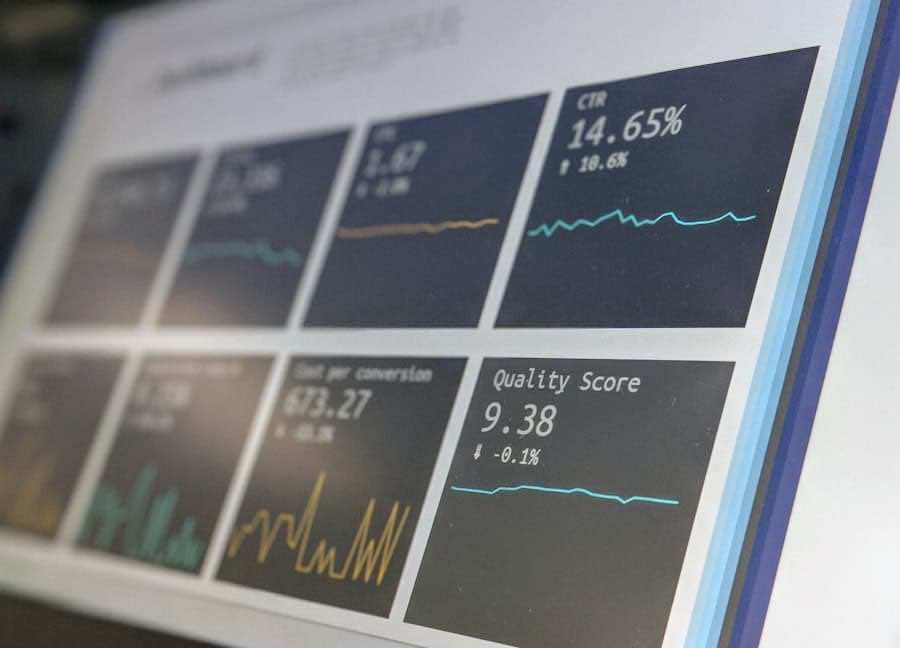Predictive demand forecasting is a sophisticated analytical process that leverages historical data, statistical algorithms, and machine learning techniques to predict future customer demand for products or services. This practice has gained significant traction in recent years, driven by the increasing complexity of global supply chains and the need for businesses to respond swiftly to market fluctuations. By accurately forecasting demand, organisations can optimise inventory levels, enhance customer satisfaction, and ultimately improve their bottom line.
The evolution of technology has made it possible to analyse vast amounts of data, allowing businesses to make informed decisions based on predictive insights rather than relying solely on intuition or past experiences. The concept of predictive demand forecasting is not new; however, its application has transformed dramatically with advancements in data analytics and artificial intelligence. Traditionally, businesses relied on simple methods such as moving averages or seasonal trends to estimate future demand.
Today, the integration of advanced algorithms and real-time data processing enables organisations to create more nuanced and accurate forecasts. This shift is particularly crucial in an era where consumer preferences can change rapidly, influenced by factors such as economic conditions, social media trends, and competitive actions. As a result, predictive demand forecasting has become an essential component of strategic planning for businesses across various sectors.
Summary
- Predictive demand forecasting is a crucial tool for businesses to anticipate future customer demand and make informed decisions.
- Implementing predictive demand forecasting can lead to improved inventory management, reduced costs, and increased customer satisfaction.
- Predictive demand forecasting works by using historical data, statistical models, and machine learning algorithms to predict future demand patterns.
- The benefits of implementing predictive demand forecasting include better resource allocation, improved production planning, and reduced stockouts.
- Common challenges in predictive demand forecasting include data quality issues, inaccurate forecasts, and the need for continuous model refinement.
The Importance of Predictive Demand Forecasting in Business
The significance of predictive demand forecasting in business cannot be overstated. Accurate demand forecasts empower organisations to make strategic decisions that align with market realities. For instance, retailers can ensure that they have the right products available at the right time, thereby minimising stockouts and excess inventory.
This balance is critical not only for maintaining customer satisfaction but also for optimising operational efficiency. When businesses can anticipate demand accurately, they can streamline their supply chain processes, reduce waste, and enhance overall productivity. Moreover, predictive demand forecasting plays a pivotal role in financial planning and resource allocation.
By understanding future demand patterns, companies can allocate their resources more effectively, whether it be in terms of workforce management, production scheduling, or capital investment. For example, a manufacturer that anticipates a surge in demand for a particular product can ramp up production in advance, ensuring that they meet customer needs without incurring unnecessary costs associated with last-minute adjustments. This proactive approach not only safeguards revenue but also strengthens a company’s competitive position in the marketplace.
How Predictive Demand Forecasting Works

The mechanics of predictive demand forecasting involve several key steps that transform raw data into actionable insights. Initially, data collection is paramount; businesses gather historical sales data, market trends, economic indicators, and even social media sentiment to create a comprehensive dataset. This data serves as the foundation for building predictive models.
The quality and breadth of the data collected directly influence the accuracy of the forecasts generated. Once the data is collected, it undergoes a rigorous cleaning and preprocessing phase to eliminate inconsistencies and ensure reliability. Following this, various statistical techniques and machine learning algorithms are employed to identify patterns and correlations within the data.
Techniques such as regression analysis, time series analysis, and neural networks are commonly used to develop models that can predict future demand based on identified trends. The models are then validated using historical data to assess their accuracy before being deployed for real-time forecasting.
The Benefits of Implementing Predictive Demand Forecasting
Implementing predictive demand forecasting offers numerous benefits that extend beyond mere accuracy in sales predictions. One of the most significant advantages is improved inventory management. By accurately predicting demand fluctuations, businesses can maintain optimal inventory levels, reducing carrying costs and minimising the risk of obsolescence.
This is particularly vital in industries with perishable goods or rapidly changing consumer preferences, where excess inventory can lead to substantial financial losses. Additionally, predictive demand forecasting enhances customer satisfaction by ensuring that products are available when customers want them. In today’s fast-paced retail environment, consumers expect immediate access to products.
A company that can reliably forecast demand is better positioned to meet these expectations, leading to increased customer loyalty and repeat business. Furthermore, the insights gained from predictive analytics can inform marketing strategies, allowing businesses to tailor promotions and campaigns based on anticipated demand spikes.
Common Challenges and Pitfalls in Predictive Demand Forecasting
Despite its advantages, predictive demand forecasting is not without its challenges. One common pitfall is the reliance on inaccurate or incomplete data. If the historical data used for forecasting is flawed or does not adequately represent current market conditions, the resulting predictions may be misleading.
This highlights the importance of continuous data monitoring and validation to ensure that forecasts remain relevant over time. Another challenge lies in the complexity of integrating various data sources. Many organisations struggle with siloed data systems that hinder their ability to create a unified view of demand signals.
This fragmentation can lead to inconsistencies in forecasting outcomes and impede decision-making processes. Additionally, businesses may face difficulties in selecting the appropriate forecasting models or algorithms that best suit their specific needs, which can further complicate the forecasting process.
Best Practices for Successful Predictive Demand Forecasting

To navigate the complexities of predictive demand forecasting successfully, organisations should adhere to several best practices. First and foremost is the establishment of a robust data governance framework that ensures data quality and integrity. This involves regular audits of data sources and processes to identify any discrepancies or gaps that could impact forecasting accuracy.
Collaboration across departments is also crucial for effective predictive demand forecasting. Sales, marketing, finance, and supply chain teams should work together to share insights and align their strategies based on forecasted demand. This cross-functional approach fosters a culture of collaboration and ensures that all stakeholders are informed about potential changes in demand patterns.
Furthermore, organisations should invest in training their staff on the latest forecasting tools and techniques. As technology continues to evolve, staying abreast of new methodologies will enable businesses to refine their forecasting processes continually. Regularly reviewing and updating forecasting models based on performance metrics will also help organisations adapt to changing market conditions.
Tools and Technologies for Predictive Demand Forecasting
The landscape of tools and technologies available for predictive demand forecasting has expanded significantly in recent years. Many organisations now leverage advanced analytics platforms that incorporate machine learning capabilities to enhance their forecasting accuracy. Software solutions such as SAP Integrated Business Planning (IBP), Oracle Demand Management Cloud, and Microsoft Azure Machine Learning provide comprehensive functionalities for data analysis and model development.
In addition to traditional software solutions, cloud-based platforms have emerged as powerful tools for predictive analytics. These platforms offer scalability and flexibility, allowing businesses to process large datasets efficiently without the need for extensive on-premises infrastructure. Moreover, many cloud solutions come equipped with built-in machine learning algorithms that simplify the modelling process for users with varying levels of expertise.
Another noteworthy trend is the integration of artificial intelligence (AI) into predictive demand forecasting tools. AI-driven solutions can analyse vast amounts of unstructured data from sources such as social media or online reviews to identify emerging trends that may influence consumer behaviour. This capability enables businesses to stay ahead of market shifts and adjust their strategies accordingly.
Case Studies of Successful Predictive Demand Forecasting Implementation
Examining real-world examples of successful predictive demand forecasting implementation provides valuable insights into its practical applications. One notable case is that of Coca-Cola Enterprises (CCE), which utilised advanced analytics to optimise its supply chain operations. By implementing a predictive demand forecasting model that incorporated various data sources—including historical sales data, weather patterns, and promotional activities—CCE was able to significantly reduce stockouts while improving service levels across its distribution network.
Another compelling example comes from fashion retailer Zara, which has long been recognised for its agile supply chain management practices. Zara employs a sophisticated predictive demand forecasting system that allows it to respond rapidly to changing fashion trends. By analysing sales data in real-time and incorporating feedback from store managers regarding customer preferences, Zara can adjust its inventory levels accordingly.
This approach not only minimises excess stock but also ensures that popular items are readily available for customers. These case studies illustrate how organisations across different industries can harness the power of predictive demand forecasting to drive operational efficiency and enhance customer satisfaction. As businesses continue to navigate an increasingly complex marketplace, the ability to forecast demand accurately will remain a critical factor in achieving long-term success.
Predictive demand forecasting is crucial for businesses to anticipate future customer needs and optimise their inventory management. In a related article on why target market research is so important in digital marketing, the importance of understanding consumer behaviour and preferences is highlighted. By utilising predictive demand forecasting alongside targeted market research, businesses can tailor their marketing strategies to meet the specific needs of their customers, ultimately leading to increased sales and customer satisfaction. This combination of data-driven insights and market research can give businesses a competitive edge in today’s digital landscape.
FAQs
What is predictive demand forecasting?
Predictive demand forecasting is the use of historical data, statistical algorithms, and machine learning techniques to predict future demand for products or services. It helps businesses make informed decisions about inventory management, production planning, and resource allocation.
How does predictive demand forecasting work?
Predictive demand forecasting works by analysing historical sales data, market trends, and other relevant factors to identify patterns and make predictions about future demand. This can involve the use of statistical models, machine learning algorithms, and advanced analytics techniques.
What are the benefits of predictive demand forecasting?
The benefits of predictive demand forecasting include improved inventory management, better production planning, reduced stockouts and overstocking, increased customer satisfaction, and overall cost savings for businesses.
What are the challenges of predictive demand forecasting?
Challenges of predictive demand forecasting include the need for accurate and reliable data, the complexity of statistical models and algorithms, and the potential for unforeseen market changes or disruptions to impact the accuracy of predictions.
How is predictive demand forecasting different from traditional demand forecasting?
Predictive demand forecasting differs from traditional demand forecasting in that it leverages advanced analytics and machine learning techniques to make more accurate and timely predictions about future demand. Traditional demand forecasting often relies on simpler statistical methods and may not take into account as many variables.
